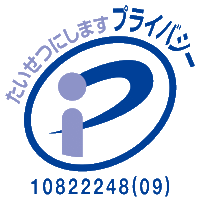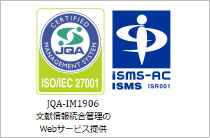ホームIMICライブラリMMWR抄訳2023年(Vol.72)バイタルサイン:アメリカ大統領エイズ救済緊急計画に・・・
2023/03/24Vol. 72 / No. 12
MMWR72(12):317-324
Vital Signs: Progress Toward Eliminating HIV as a Global Public Health Threat Through Scale-Up of Antiretroviral Therapy and Health System Strengthening Supported by the U.S. President’s Emergency Plan for AIDS Relief — Worldwide, 2004–2022
バイタルサイン:アメリカ大統領エイズ救済緊急計画に支援された抗レトロウイルス療法のスケールアップと保健システムの強化を通じた世界的な公衆衛生上の脅威としてのHIV根絶に向けた進展-全世界、2004年~2022年
2004年、アメリカ大統領エイズ救済緊急計画(PEPFAR)ではCDCとともに世界中でHIVに対する抗レトロウイルス療法(ART)の提供を開始した。効果的なARTはHIVウイルス量の抑制を通じて、HIV感染者の疾病率および死亡率を低下させ、垂直感染および性感染を防ぐ。プログラムの影響を評価するため、すべてのPEPFARプログラムと、全国を代表する人口ベースHIV Impact Assessment(PHIA)調査を実施した6カ国のデータが分析された。調査には2004年~2022年にPEPFAR支援ARTを受けたHIV感染者数、2015年~2022年のウイルス量検査率(対象となるHIV感染者がウイルス量検査を受けた割合)およびウイルス量抑制率(検査を受けた感染者のうち血液1mL中のHIVコピー数が1,000未満の割合)、2015年~2021年に2つのPHIA調査が実施された6カ国における集団ウイルス量抑制率が含まれた。保健システムの強化を評価するため、労働力と検査システムに関するデータが分析された。2022年9月までに、54カ国にてHIV感染者約2,000万例がPEPFAR支援ARTを受け(62%はCDC支援)、2004年9月に報告された66,550例から300倍に増加した。2015年から2022年にかけてウイルス量検査率は24%から80%へと3倍以上増加し、ウイルス量抑制率は80%から95%に増加した。ウイルス量抑制率と医療システム強化への投資が増加しているにもかかわらず、ウイルス量検査率は一部の亜集団[10歳未満の子供、男性、妊婦、男性間同性性的接触者、刑務所やその他の閉鎖された場所にいる人(収監者)、トランスジェンダー]にてばらつきがあり、ウイルス量抑制率も亜集団(妊婦・授乳婦、収監者、20歳未満)にてばらつきがあった。世界的な公衆衛生上の脅威としてのHIV流行を終結させるために、達成した結果を持続し、すべての亜集団に拡大する必要がある。CDCとPEPFARは、公衆衛生システムと世界の健康保障を強化しながら、HIVに引き続き取り組んでいく。
References
- Braitstein P, Brinkhof MW, Dabis F, et al.; ART Cohort Collaboration (ART-CC) groups. Mortality of HIV-1-infected patients in the first year of antiretroviral therapy: comparison between low-income and high-income countries. Lancet 2006;367:817–24. PMID:16530575 <https://doi.org/10.1016/S0140-6736(06)68337-2>
- Siegfried N, van der Merwe L, Brocklehurst P, Sint TT. Antiretrovirals for reducing the risk of mother-to-child transmission of HIV infection. Cochrane Database Syst Rev 2011;(7):CD003510. PMID:21735394 <https://doi.org/10.1002/14651858.CD003510.pub3>
- Cohen MS, Chen YQ, McCauley M, et al.; HPTN 052 Study Team. Antiretroviral therapy for the prevention of HIV-1 transmission. N Engl J Med 2016;375:830–9. PMID:27424812 <https://doi.org/10.1056/NEJMoa1600693>
- Rodger AJ, Cambiano V, Bruun T, et al.; PARTNER Study Group. Risk of HIV transmission through condomless sex in serodifferent gay couples with the HIV-positive partner taking suppressive antiretroviral therapy (PARTNER): final results of a multicentre, prospective, observational study. Lancet 2019;393:2428–38. PMID:31056293 <https://doi.org/10.1016/S0140-6736(19)30418-0>
- Bavinton BR, Pinto AN, Phanuphak N, et al.; Opposites Attract Study Group. Viral suppression and HIV transmission in serodiscordant male couples: an international, prospective, observational, cohort study. Lancet HIV 2018;5:e438–47. PMID:30025681 <https://doi.org/10.1016/S2352-3018(18)30132-2>
- Heaton LM, Bouey PD, Fu J, et al. Estimating the impact of the US President’s Emergency Plan for AIDS Relief on HIV treatment and prevention programmes in Africa. Sex Transm Infect 2015;91:615–20. PMID:26056389 <https://doi.org/10.1136/sextrans-2014-051991>
- Dirlikov E, Kamoga J, Talisuna SA, et al.; PEPFAR Uganda. Scale-up of HIV antiretroviral therapy and estimation of averted infections and HIV-related deaths—Uganda, 2004–2022. MMWR Morb Mortal Wkly Rep 2023;72:90–4. PMID:36701255 <https://doi.org/10.15585/mmwr.mm7204a2>
- Nkambule R, Philip NM, Reid G, et al. HIV incidence, viremia, and the national response in Eswatini: two sequential population-based surveys. PLoS One 2021;16:e0260892. PMID:34855890 <https://doi.org/10.1371/journal.pone.0260892>
- Medland NA, McMahon JH, Chow EP, Elliott JH, Hoy JF, Fairley CK. The HIV care cascade: a systematic review of data sources, methodology and comparability. J Int AIDS Soc 2015;18:20634. PMID:2>6626715 <https://doi.org/10.7448/IAS.18.1.20634>
- Yao K, Maruta T, Luman ET, Nkengasong JN. The SLMTA programme: transforming the laboratory landscape in developing countries. Afr J Lab Med 2014;3:194. PMID:26752335 <https://doi.org/10.4102/ajlm.v3i2.194>
- Justman JE, Mugurungi O, El-Sadr WM. HIV population surveys—bringing precision to the g>lobal response. N Engl J Med 2018;378:1859–61. PMID:29768142 <https://doi.org/10.1056/NEJMp1801934>
- Birx D, Zaidi I. Forward: measuring progress toward epidemic control. J Acquir Immune Defic Syndr 2021;87(Suppl 1):S1. PMID:34166306 <https://doi.org/10.1097/QAI.0000000000002700>
- Fisher KA, Patel SV, Mehta N, et al.; PEPFAR Strategic Information Study Group. Lessons learned from programmatic gains in HIV service delivery during the COVID-19 pandemic—41 PEPFAR-supported countries, 2020. MMWR Morb Mortal Wkly Rep 2022;71:447–52. PMID:35324881 <https://doi.org/10.15585/mmwr.mm7112a2>
- Bachanas PJ, Chun HM, Mehta N, et al. Protecting the gains: analysis of HIV treatment and service delivery programme data and interventions implemented in 19 African countries during COVID-19. J Int AIDS Soc 2022;25:e26033. PMID:36419346 <https://doi.org/10.1002/jia2.26033>
- Boyd AT, Jahun I, Dirlikov E, et al. Expanding access to HIV services during the COVID-19 pandemic—Nigeria, 2020. AIDS Res Ther 2021;18:62. PMID:34538268 <https://doi.org/10.1186/ s12981-021-00385-5>
- Dirlikov E, Jahun I, Odafe SF, et al.; CDC Nigeria ART Surge Team. Rapid scale-up of an antiretroviral therapy program before and during the COVID-19 pandemic—nine states, Nigeria, March 31, 2019–September 30, 2020. MMWR Morb Mortal Wkly Rep 2021;70:421–6. PMID:33764965 <https://doi.org/10.15585/mmwr.mm7012a3>
- Romano ER, Sleeman K, Hall-Eidson P, et al. Contribution of PEPFAR-supported HIV and TB molecular diagnostic networks to COVID-19 testing preparedness in 16 countries. Emerg Infect Dis 2022;28:S59–68. PMID:36502414 <https://doi.org/10.3201/eid2813.220789>
- Kloek M, Bulstra CA, van Noord L, Al-Hassany L, Cowan FM, Hontelez JAC. HIV prevalence among men who have sex with men, transgender women and cisgender male sex workers in sub-Saharan Africa: a systematic review and meta-analysis. J Int AIDS Soc 2022;25:e26022. PMID:36419343 <https://doi.org/10.1002/jia2.26022>
Copyright © 2013 International Medical Information Center. All Rights Reserved.












